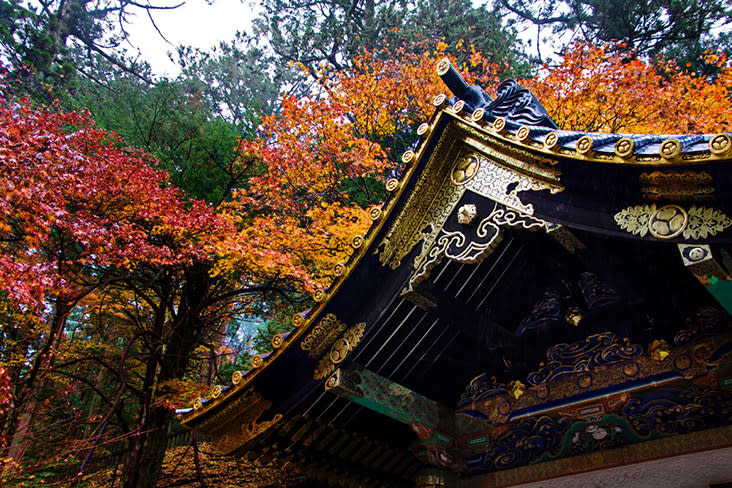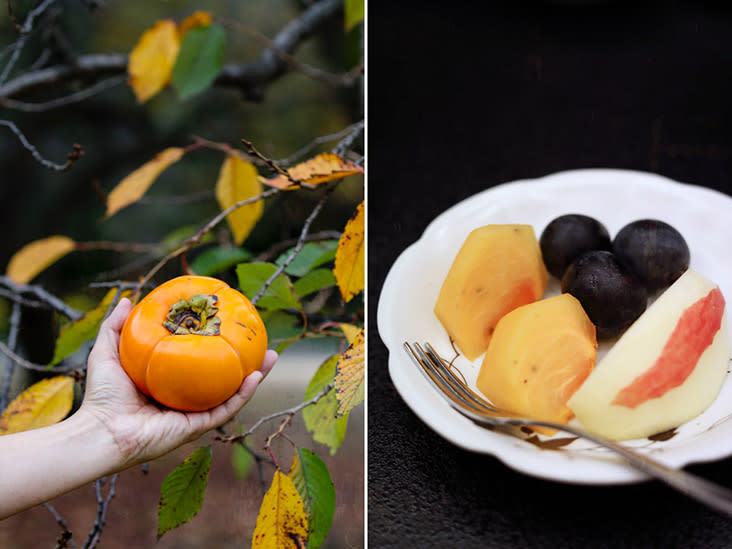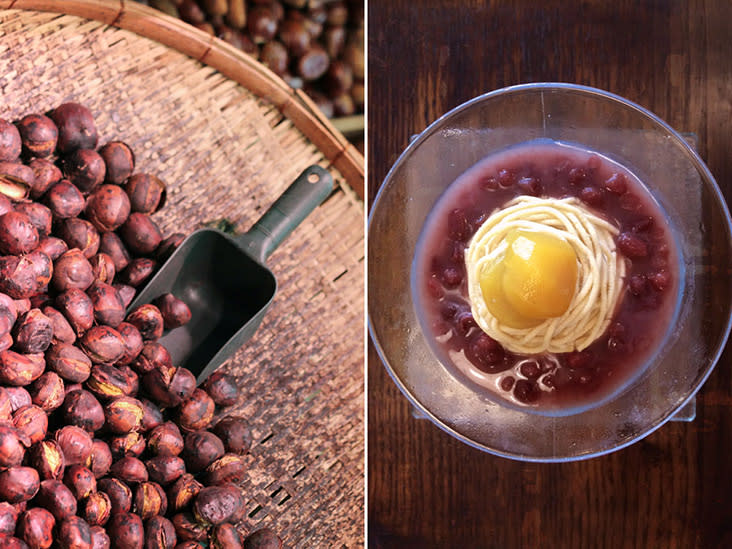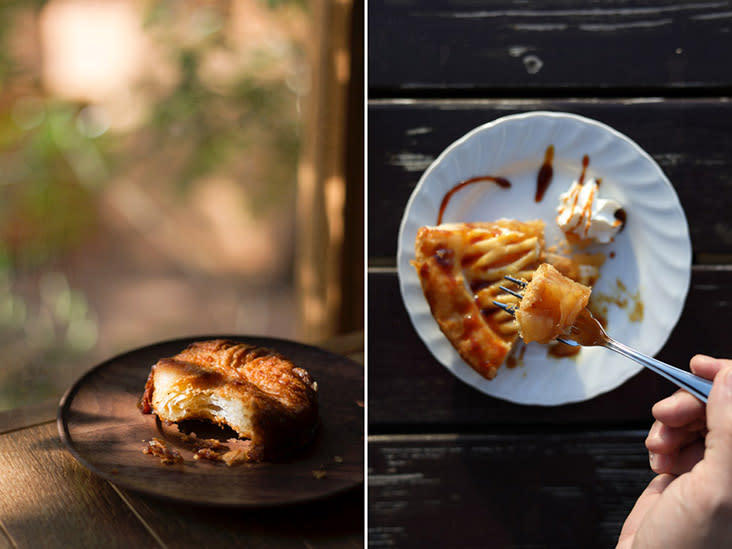Fall feast: A taste of Japan’s autumnal flavours

TOKYO, Nov 26 — These days, the weather alternates between sweat-drenching-our-clothes sweltering one minute and torrential downpours the next. Here in the tropics, it’s that time of year when the monsoon season returns.
Elsewhere, in the Southern Hemisphere, springtime is in full bloom with colourful flowers at their best. But it’s neither precipitation nor petals that most associate with November.
The season we’re thinking of is autumn. The season when dry leaves drift down from branches in a riot of red, orange and gold. And there’s no better place to observe this than in Japan, where the trees burst into colour come mid-November.
There’s even a name for the art of fall foliage viewing: momigari. Literally meaning “red leaf hunting”, momigari is a nationwide obsession. More forgiving than the brief spurt of cherry blossoms half a year earlier, autumnal colours last for weeks.
And it’s during this lengthier season that the Japanese make the best of autumnal bounty into a feast of seasonal delicacies.
One such indispensable autumn offering is kaki or persimmon. Whether consumed fresh — crunchy, juicy and delicately sweet — or dried, with a softer bite and more intense flavour, kaki is a seasonal obsession.
The latter method of enjoying them can be an acquired taste. Fresh persimmons are dried by hanging them and the resulting dried fruit, called hoshigaki, is very chewy and almost too sweet. A little goes a long way.

Perhaps temper such a saccharine overload with a sip of chrysanthemum tea. Beyond steeping as a tea, however, chrysanthemum petals can be pickled and served as appetisers. More floral than tea-like, their fragrance is another sign of the season that has arrived.
Another fall time favourite are mushrooms, of which Japan has an abundance of. Beyond the ubiquitous shiitake, there are feathery clusters of maitake (hen-of-the-woods mushroom) that taste exquisite with a sprinkle of salt; spicy-aromatic matsutake (pine mushroom), typically balanced with a squeeze of citrus; and sticky nameko mushrooms, best enjoyed in a rice congee known as nameko zousui.
You observe that many of Japan’s autumnal treats are served hot. The temperatures drop and correspondingly the cravings for steamed and boiled foods such as oden — an assortment of daikon, fishcakes and hard-boiled eggs stewed in a light dashi broth — increase.

These can be found at the nearest neighbourhood konbini (convenience store), of course, though you may be more adventurous. Certainly the bracing weather is no deterrent for the Japanese to head outdoors and explore the offerings of street food stalls.
You will find these Japanese street vendors busy grilling, roasting and baking autumnal treats. One of the must-haves are yaki-guri or roasted chestnuts. Their deep, toasty and nutty flavour pairs perfectly with the chilly autumn air.
Besides roasting, Japanese chestnuts or kuri can be savoured in a variety of ways: kuri manju, a round pastry filled with a mixture of sweetened chestnut and bean paste; the crackly crunch of kuri no shibukawani or candied chestnuts; and refined kuri mushipan, steamed cakes filled with chestnut paste and whipped cream.
If you’re a fan of wagashi or Japanese teatime desserts, you will fawn over a decadent bowl of kuri kinton (chestnut purée). Piped into vermicelli-like swirls of chestnut mousse atop a mound of tender adzuki beans and crowned with a couple of peeled roasted chestnuts, this is a wagashi to spoil yourself silly with.

Autumn, of course, is also a time for apples. Beyond the crunch of a raw apple, just picked from the branch, there are numerous apple-based snacks to be savoured, from apple chips to wedges of dehydrated apples dusted with cinnamon sugar.
But there’s no better way of enjoying apples than that autumnal standard: a humble apple pie.
Even here, there are a myriad array of apple pies to choose from, from the flaky filo pastry of tiny, kawaii bites to a humongous pie made in Hirosaki called kyodai that can stretch two metres in diameter (best bring a hearty appetite for that one).
Whichever you decide on, your slice of apple pie won’t be complete without a dollop of fresh cream on the side. Given the provenance and careful rearing of the country’s dairy cows, you can be sure such cream, made from the finest fresh milk, will be worth every calorie!

Speaking of cream, another seasonal favourite is shu-cream filled with chestnut purée or stewed apples. Inspired by Choux à la Crème, the shu-cream is a distinctively Japanese reinvention: smaller choux pastry puffs that are lighter and airier than the French original.
The fun comes in what they are filled with. Other months may see a boring sweet custard but come autumn and the season’s harvest will find their way in between the two halves of the choux puffs.
You may get your half dozen at any bakery but even the cafés serve them in autumn, from a traditional smoked-filled kissaten to any number of international coffee chains found around every street corner.
Whether you order a shu-cream or another pastry of choice (again, a slice of apple pie simply feels right in November), don’t forget to order a cup of coffee too.

The Japanese love their coffee and when you get a whiff of that freshly brewed aroma, you can’t help but understand why.
Despite what the Americans might say, autumn in Japan isn’t a time for pumpkin spiced lattes. Order your coffee black, whether an espresso or a pour-over. The straightforward kick, that pick-me-up, helps you better appreciate the sweetness of autumn.
Depending on the kissaten or café you find yourself in, you might even have a window seat from which to see the world outside go by. The bric-à-brac of daily life barely has time to accumulate as pedestrians cross roads and shop owners announce their wares and daily specials.

If you are truly blessed, you might have a tree just outside where you are sipping coffee and munching your pastry. A maple, maybe, or a ginkgo. Red, orange or gold. Or all of the above.
It’s a time for momigari, yes, but who says you have to go hunting for these fiery foliage? The leaves may fall where they may, and you can better use your time to taste more of autumn itself.
Be it kuri or kaki, autumn is one of the best times to savour the flavours of Japan. The taste is a reminder that even the most trying and toughest of months will pass, and the sweetness of life always returns.
For more slice-of-life stories, visit lifeforbeginners.com.
Related Articles RMCO food delivery: Support social enterprise Stand Pie Me by ordering their affordable pies Mushrooms make better packaging than recycled cardboard, research shows In Washington, cherry blossoms test isolation’s limits



